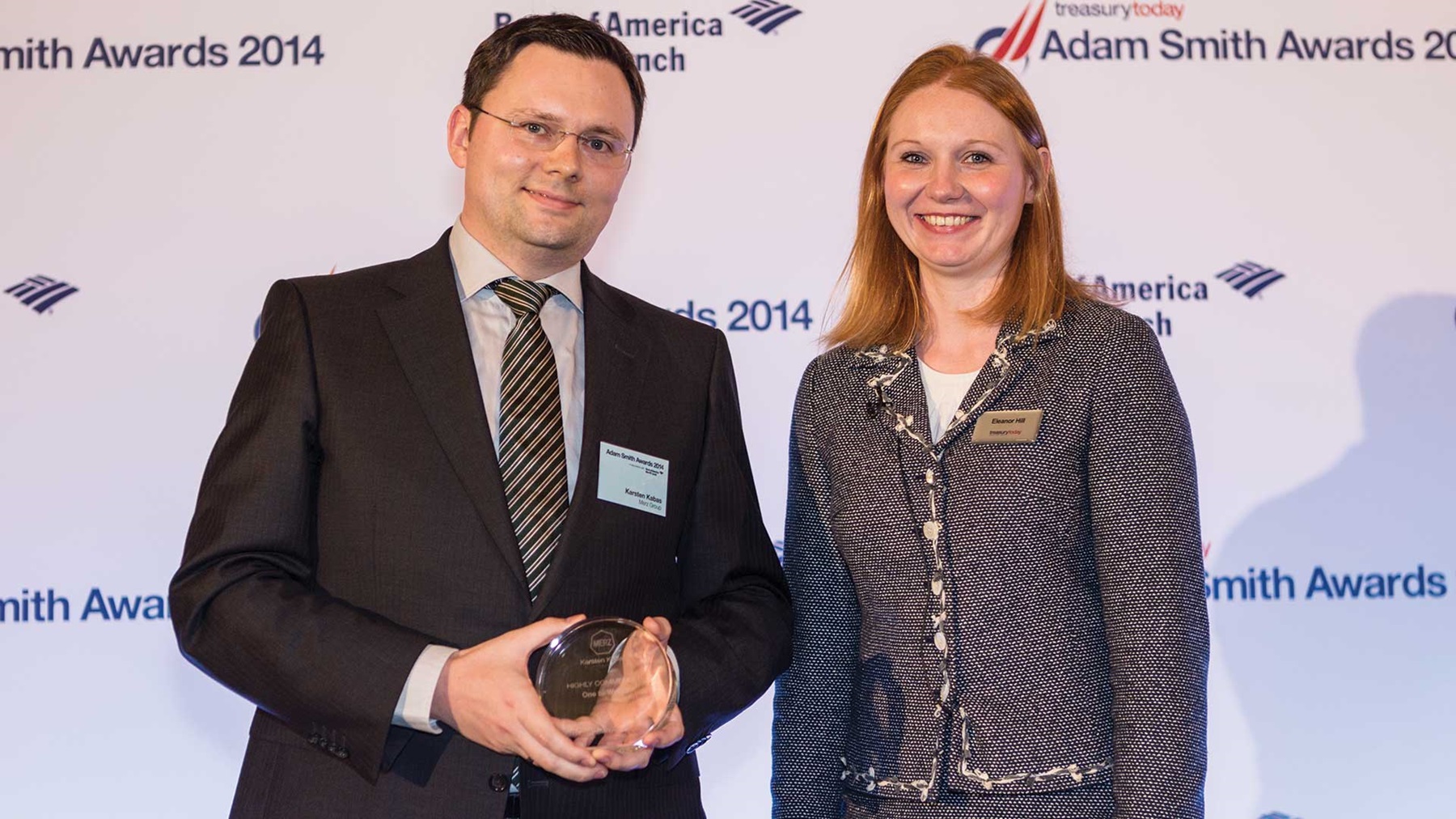
Photo of Karsten Kabas of Merz Pharma Group.
This successful approach shows how to strategically develop a treasury IT infrastructure without handling a dozen or more software systems or partners. It combines continuous innovation and process optimisation and automation while keeping IT complexity low.
Karsten Kabas
Head of Corporate Treasury

Merz is a privately held pharmaceuticals company involved in the research, development and sale of innovative drugs and medical products for clinical dermatology and neurological indications as well as for aesthetics medicine and metabolic disorders.
The Merz Pharma Group employs 2,443 people worldwide (prior year: 2,389). The Company generated revenue of €980.2m in fiscal year 2012/13 (prior year: €913.1m).
The challenge
Merz wanted to improve efficiency and reduce the burden of manual tasks within its treasury. It sought to achieve this step by step through the implementation of an integrated technology architecture which was fit for purpose, required manageable development effort on its part, and could be deployed with minimal disruption.
The solution
The Merz Treasury team responded to the challenge by implementing a fully integrated TMS. The new TMS interfaced directly with Merz’s existing Bloomberg and SAP systems, and provided a range of functionalities including electronic dealing, electronic confirmation matching, and integrated straight through EMIR reporting. These functionalities were delivered while keeping system complexity comparably low and maintaining a tight control on the price-performance ratio.
The integrated solution (Bloomberg – Technosis ATAQ – SAP) delivers a strategically developed treasury and finance IT landscape ready to meet Merz Pharma Group’s current requirements as well as potential requirements in the future. The three strategic software partners offer the scope to provide even greater benefits in the future without adding additional partners. Therefore, it was extremely advantageous to keep IT, interface and process complexity as low as possible in the treasury department on a sustainable basis.
The group’s different treasury tasks (in place and prospective) were allocated to three strategic systems:
-
Bloomberg:
Electronic dealing, research, analysis, pricing, news, alerts, data provider for Technosis ATAQ (Bloomberg data license), and electronic FX confirmation matching (this element has not been implemented yet but the project is underway).
-
Technosis ATAQ:
Portfolio management (deals automatically enter from Bloomberg via two-way FIX-standardised interfaces), risk management (including counterparty risks), scenario analysis, treasury master data concentration, FX differentiated cash-flow planning, automated EMIR reporting, cash management, group bank account status, handling of all intercompany deals and transactions, and debt management.
-
SAP ERP:
A batch can be generated in Technosis ATAQ to deliver accounting transactions related to the treasury deals and a revaluation of assets and derivatives which are all managed in Technosis ATAQ.
Specialty consultant firm Schwabe, Ley & Greiner supported the evaluation process of the TMS and helped to clearly identify the best fitting solution for Merz, including the price-performance ratio aspects.
Best practice and innovation
This successful approach shows how to strategically develop treasury IT infrastructure without handling a dozen or more software systems or partners. It combines continuous innovation and process optimisation and automation while keeping IT complexity comparably low.
“Without sacrificing any required or innovative aspects – such as electronic confirmation matching, and straight through EMIR trade reporting – our solution meets the demands of a fast-growing global mid-sized player like Merz where IT project capacities need to be used very efficiently and where we always have an eye on price-performance ratio aspects as well as keeping a streamlined head office,” explains Karsten Kabas, Head of Corporate Treasury.
“The key benefits are the ability to carry out straight through processing, robust relief from manual tasks, flexible interfaces between the systems and a long-lasting treasury IT landscape which can be easily adapted to further requirements,” concludes Kabas. Certainly ‘one-to-watch’, our judges point out.
Key benefits
- Cost savings.
- Time taken to implement the solution and realise benefits.
- Productivity gains.
- Process efficiencies.
- Satisfies evolving regulatory requirements, for example, Dodd-Frank and EMIR.